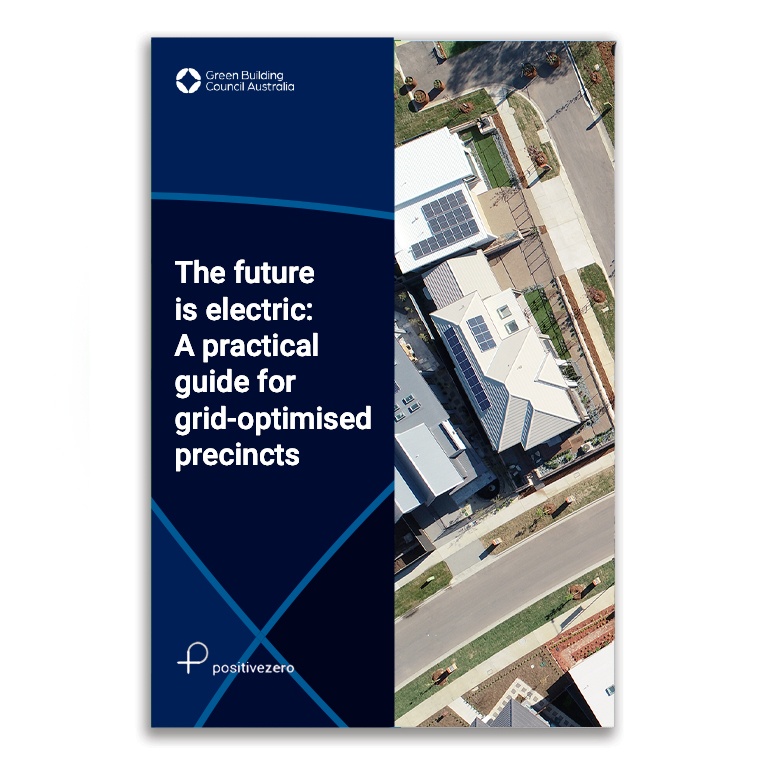The future is electric
One of the biggest challenges facing our industry is decarbonisation. What is the best way to eliminate emissions from buildings and how do we do it at speed and scale to meet investor, tenant, and government expectations? Every decarbonisation strategy will look different but for our industry to reach zero carbon they should all have one thing in common – electrification.
A practical guide for grid-optimised precincts

As Australia moves towards a fully renewable national electricity grid, it’s essential that new precincts are optimised to support the transition, to help our nation reach its climate targets, and secure lower energy costs.
Designed to help developers, governments, building owners, planners, investors and residents plan and best utilise all-electric precincts, the guide outlines current technologies and advice on how to prepare for the transition to electric vehicles, energy storage and a more dynamic renewable electricity grid.
This guide is the next step after our 2022 roadmap to decarbonise Australia’s precincts, which set a net zero goal for new precincts by 2030, and existing precincts by 2050.
Download the paperIn line with our target to reach Absolute Zero by 2040 for Scope 1, 2 and 3 emissions without the use of offsets, electrification across our global investments, development and construction activities is essential.
Cate Harris, Global Head of Sustainability and Foundation, Lendlease
Resources to help you electrify
It’s clear, the future is electric. Whether you’re looking to electrify a new building or existing building, there’s a practical resource that will get you started on your electrification journey.
From net zero to zero: a discussion paper on grid-interactive efficient buildings
This paper aims to start a conversation on the role of GBCA and its members in understanding the impact of the built environment on a rapidly transforming electricity grid, and vice-versa.
A practical guide to electrification: for existing buildings
This guide outlines the steps involved in retrofitting existing buildings to be all-electric and the types of technologies that can be used today to replace natural gas systems with electric solutions.
A practical guide to electrification: for new buildings
This guide outlines the steps involved in delivering an all-electric new building and the types of technologies that can be used today to replace natural gas systems with electric solution.
Why electrification is the better way forward
While other sectors will take time to decarbonise, the technology for electrifying buildings already exists and is proven. From hospitals to aquatic centres, to new and existing buildings, electrification is being demonstrated in buildings of all shapes and sizes.
Electrification is the cleaner, better way towards decarbonisation and it will allow us to eliminate fossil fuels like gas, which are harmful for people and the planet. Right now, gas is responsible for almost 30% of building energy consumption in Australia; eliminating it from our buildings will make a big difference, quickly. Our grid is also getting cleaner and faster, so once you've electrified, you'll be able to turn off fossil fuels, tap into renewable energy and play your role in the clean energy transition.
Fully electric buildings are better for you, your family, your workmates and customers. When we burn gas in kitchens – at home or in restaurants - we release harmful pollutants. Cooking with gas has asthma risks comparable to secondhand cigarette smoke and children living in homes with gas cooking have a 42% increased risk of having current asthma. It’s clear that electrification is the healthier, better option for our homes and workplaces.
Many tenants already know electric buildings are better, with 80% including or planning to include electrification clauses in leases. Electric buildings are future-ready, without outdated technology that fossil fuels rely on. If you want your asset to attract investors and have access to sustainable finance, choose an electrified building on a clear decarbonisation pathway.